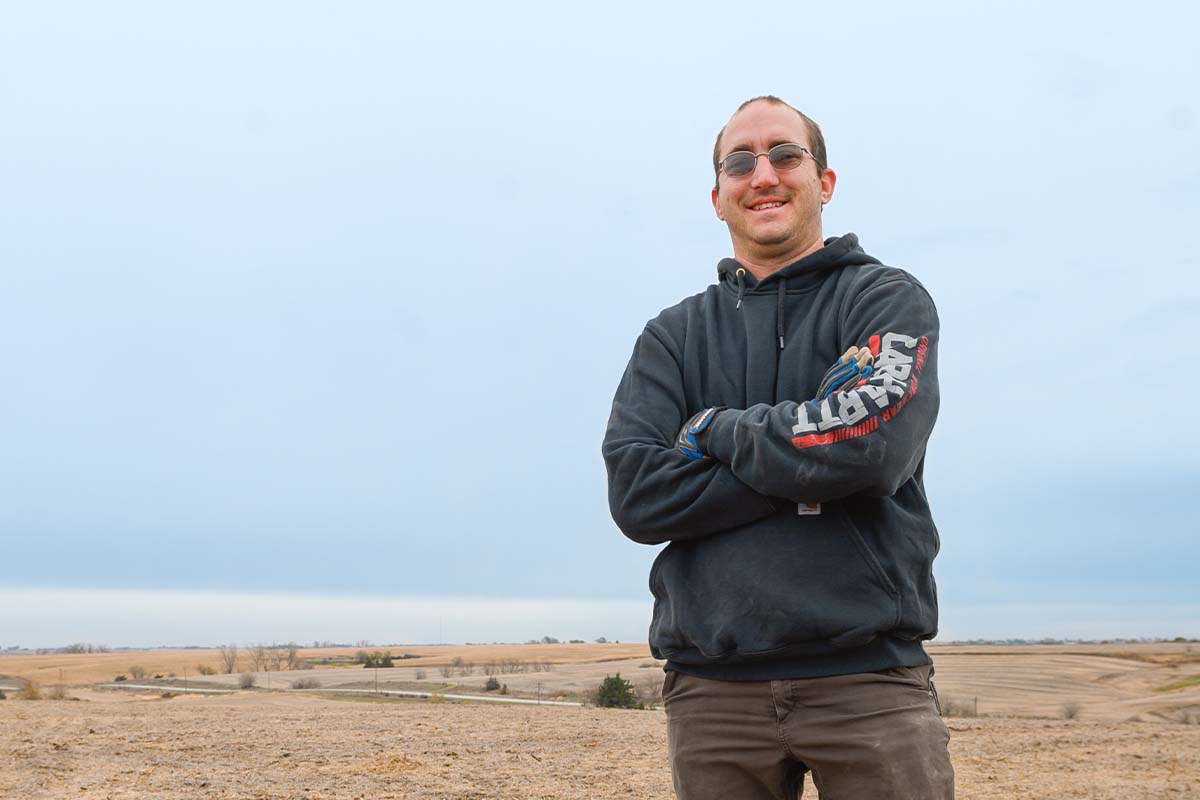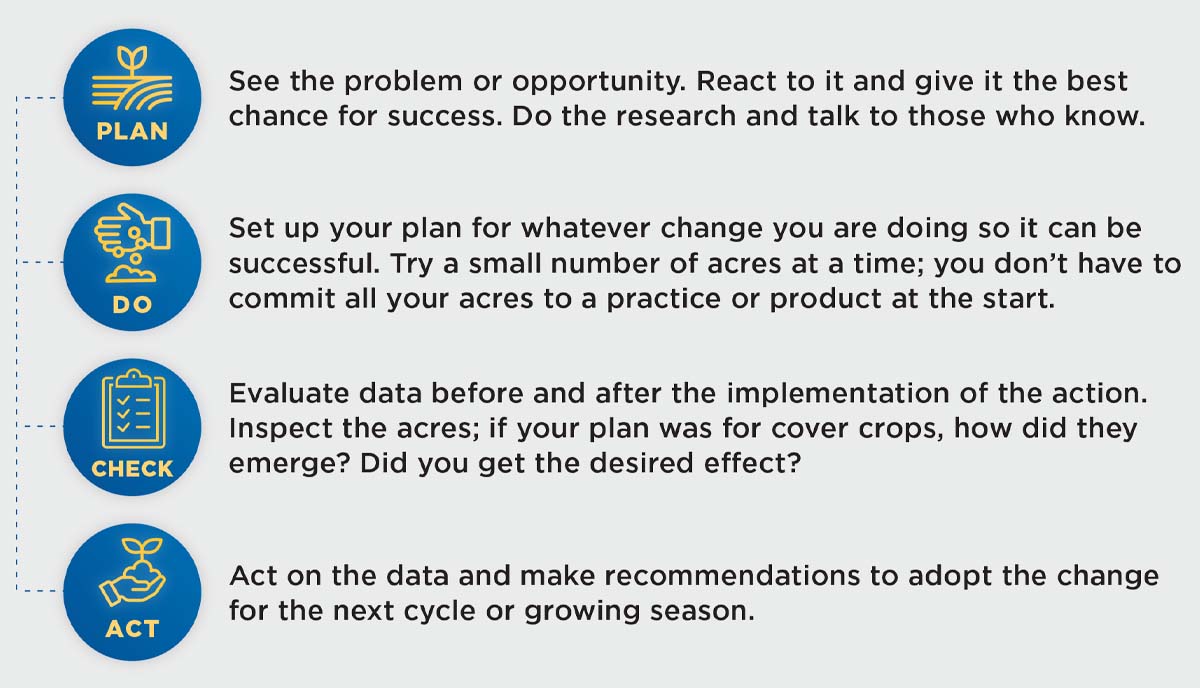
(Photo: Iowa Soybean Association)
Implement a continuous improvement process for your farm
February 7, 2023 | Kriss Nelson
Are you looking for a plan to improve processes and implement changes on your farm?
Adopting the Plan, Do, Check, Act cycle (PDCA) could help make those changes, and the Iowa Soybean Association’s (ISA) Research Center for Farming Innovation (RCFI) team is here to help.
“PDCA is a methodical way to accomplish progress. Farmers do this every day, but let’s make it intentional,” says Roger Wolf, RCFI co-director of conservation and cropping systems implementation.
“PDCA is a management cycle to be better. It’s a way of framing your thinking and applying actions to achieve something that has value.”
The PDCA cycle is something the RCFI team works through as it evaluates a problem then seeks solutions for farmers.
“RCFI is continuously following the same practice to improve efficiency and effectiveness to better serve Iowa farmers,” says Joe McClure, RCFI co-director of on-farm research.

Step 1: Plan
First, define the problem, concern or opportunity. Then collect the data and resources needed to implement the plan.
Consider RCFI’s library of online tools and regional agronomists as a resource when developing a plan.
“We can help farmers do their own single site strip trial, or we can guide them to help ensure they have a good game plan and are set up for success,” says McClure.
Step 2: Do
Once you have developed the plan, whether it is to plant cover crops or try a new fungicide or seed treatment product, it’s time to put the plan into action. McClure’s advice when it comes to the implementation stage: Keep it manageable.
“Set up your plan for whatever change you are doing so it can be successful,” he says. “For example, perhaps start a practice or a product close to the farm
to easily observe the trial. Try a small number of acres at a time; you don’t have to commit all your acres to a practice or product at the start.”
Step 3: Check
Throughout the growing season or the plan’s time frame, those who utilize the PDCA cycle utilize the check process to evaluate data before and after the implementation of the action.
“Inspect the acres; if your plan was for cover crops, how did they emerge? How is the cash crop doing with the cover crops? Did your plan conflict with another operation on the farm?” says McClure. “Did you get the desired effect? Consider what you should do differently next year.”
Think about the risks, Wolf says.
“At this stage, you are thinking and analyzing the return on investment,” says Wolf. “What additional risks does this practice include?”
Water monitoring, for example, helps RCFI staff evaluate the performance of edge-of-field practices. It helps determine if a bioreactor is functioning properly, evaluate the impact of cover crops on downstream nutrient loss and determine impacts of practices on yield, efficiency and weed control.
Data and information provided to the farmer takes some uncertainty out of changing cropping systems, Wolf says.
Step 4: Act
Once the research and results are compiled, it is time to act on the data and make recommendations to adopt the change for the next PDCA cycle.
“You take what you learn and continue to make improvements to make the next week, year or beyond successful,” says McClure. “There is never a time, especially in a living system like farming, where you set it, it’s fixed, done and you move on. It will always need to be tweaked based on weather, pests and equipment.”
Opportunities
Chris Gaesser, an ISA farmer-member from Lenox, is familiar with implementing the PDCA cycle on his farm. Whether it is cover crops, fungicides or nitrogen trials, the Adams County farmer says the Plan, Do, Check, Act cycle always applies.
“We have been working with RCFI for a long time on various projects, including fall versus spring nitrogen application trials,” he says. “We make the plan, then apply nitrogen in strips in the fall and apply nitrogen next to them in the spring. We check the trial by gathering the yield data. Those results help lead into action.”
ISA has many opportunities available to producers to implement a PDCA method. On-farm research available to producers includes seeding rate trials, seed treatments, SCN trials and soy fungicide trials.
“We have the power of our regional agronomists and analytics team to help analyze what has worked well by soil type, farm area and return on investment,” says McClure.
Agronomist support, coupled with research and technical expertise, brings value to farmers no matter their goals, Wolf says.
“At RCFI, we have a full breadth of resources ranging from cropping systems to conservation systems and research and technical support to help a producer develop their action plan,” says Wolf. “It goes right to the heart of who ISA is and why being a member of the association is valuable.”
Back